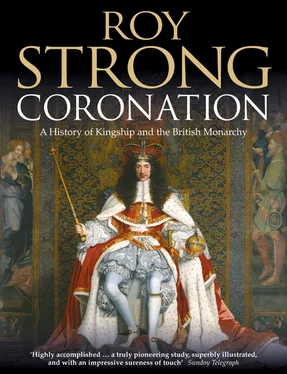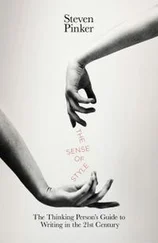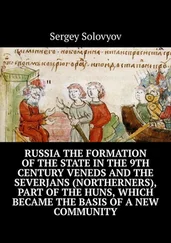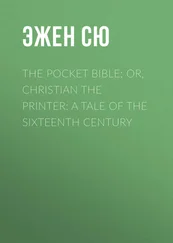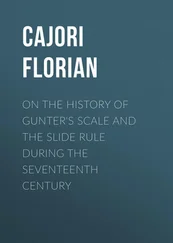The Abbey’s rise was to be far slower. 13 Although kings were crowned there, royal interest thereafter ceased, preferring to favour their own foundations and choosing also to be buried elsewhere. In the years immediately after 1066 there was no attempt by the monks to exploit their connexion with the vanquished Anglo-Saxon royal house. That only came to be of advantage at the turn of the eleventh to the twelfth century. Henry I’s Coronation charter placed voluntary restraints on his use of the royal prerogative, citing in three clauses the laws of Edward the Confessor, by which was meant the whole body of Anglo-Saxon law before the Conquest. In doing this Henry was exploiting what the monks of Westminster Abbey had already embarked upon, capitalising on its role as the resting place of a king on his way to beatification. That can be traced in the series of lives of Edward the Confessor which record the steady upward curve to canonisation: the Vita Ædwardi Regis by an anonymous writer about 1067; the Prior Osbert de Clare’s Vita Beati Ædwardi Regis Anglorum, completed by 1138 to accompany the first petition to the pope for his canonisation; and, finally, Ailred de Rievaulx’s Vita Sancti Edwardi Regis, written after the king’s canonisation in 1161 and in time for the translation of his body to a new shrine in 1163.
The driving force behind this came not initially from the crown but the Abbey, setting out to defend its territorial rights by upping its royal associations. In this they were helped by Abbot Baldwin of Bury St Edmunds (1065–97), a monk from St Denis, who was all too familiar with how to exploit such a royal foundation. That was achieved through a whole series of forged charters by a monk, Guerno of St Augustine’s, Canterbury. St Augustine’s had remained a bulwark of pre-Conquest Anglo-Saxon Christianity and is the most likely source of the design of the Bayeux Tapestry in which Edward the Confessor is depicted as a saintly bearded patriarch.
The key figure in the canonisation campaign was Prior Osbert de Clare during whose time a whole series of forged charters was produced, including ones in the names of Popes Nicholas II and Paschal II confirming the Abbey’s claim to be both the permanent setting for the Coronation and also the place where St Edward’s regalia (to which I will come) were kept. By the twelfth century the papacy claimed the sole right to proclaim saints, and in 1139 Innocent II declined Westminster’s petition to canonise the king on the grounds of insufficient support within the realm. Otherwise the moment was propitious, the prior being the king’s illegitimate kinsman and having the endorsement of the king, Stephen, and his brother, Henry of Blois, Bishop of Winchester. The real reason for the pope’s refusal was probably the king’s arrest of the Bishop of Salisbury in the same year. After this failure royal interest in the Abbey went into abeyance until Henry II, who made much of his Anglo-Saxon ancestry, saw the potential of having a royal saint in his battle with the Church. On this occasion it worked. Edward was canonised and his remains translated amidst splendour on 13 October 1163 in a ceremony designed to impress the pope, just as the battle against Becket was about to reach its zenith. For Henry II, St Edward the Confessor enhanced the charismatic character of his kingly rule and the sacred nature of English kingship. Neither of his successors, Richard I or John, were to take any interest in the new royal saint and his cult was not to go into the ascendant again until the reign of Henry III.
The fact that the Abbey cast itself as the custodian of St Edward’s regalia means that items recognised as constituting them must have existed. The early history of the regalia is shrouded in mystery, not helped by the fact that they were all deliberately destroyed under the Commonwealth. Recent scholarship, however, has come down in favour of a nucleus of royal ornaments which can be argued to have been deposited by Edward the Confessor either for safekeeping or indeed as regalia to be used by the future kings of England. 14 If the latter was, indeed, the case they constituted what was the earliest set of royal regalia in Western Europe. These items were always royal property and the Abbey’s role was never other than as custodian.
By about 1200, of what did these regalia consist? There was St Edward’s Crown, which evidence indicates is likely to have been the work of a Byzantine craftsman working in England. It was a circlet with four fleurons and possibly four crosses arising from it, above which rose a double arch, on the crossing of which there was a cross with bells that tinkled when the wearer moved. The indications are that Edward, with his pretensions as Basileus Anglorum, abandoned the earlier open crown of the late Anglo-Saxon kings in favour of one modelled on that worn by Eastern Emperors. To the crown can be added two sceptres and what was known as St Edward’s staff. One of the sceptres again betrayed Byzantine influence, having four pendant pearls and a gold cross at the top. The second one was made of iron with a fleur-de-lys at the summit. The use of iron was probably due to a biblical precedent, Psalm 2, which speaks of the awaited Messiah as coming to rule with a rod of iron ( virga ferrea ). Sceptres such as these were symbols of command, but St Edward’s staff was topped with a dove, the emblem of peace, and spoke of a king’s pastoral care for his people. It had a spike at the other end. Finally come liturgical items. One was the crux natans, said to have been rescued by the Confessor from the sea on what would have been his return journey to England in 1041, and therefore likely to have been acquired by him in Normandy. The descriptions indicate a wooden cross covered at the front with gold plate set with jewels in mounts on which there was a figure of the crucified Christ, probably in ivory. Inventory descriptions of St Edward’s chalice, later known as the regal, indicate that it was a large and richly carved late antique cup, of a type eagerly sought after in the tenth and eleventh centuries, to which gold mounts had been added. The gold paten which accompanied it was of enamelled Anglo-Saxon work. An ivory comb, also assigned to St Edward, could be Anglo-Saxon, but its use is uncertain. When it came to vestments everything is far more problematic, although it is possible that a mantle and possibly a supertunic could have been part of the original regalia. The mantle was adorned with golden eagles and was of a type worn by the Eastern emperors.
William of Sudbury, a learned monk of Westminster, wrote a tract for Richard II on the regalia arguing that they were even older, that they had been the gift of Pope Leo to Alfred the Great on the occasion of his ‘Coronation’ in Rome. That at least can be dismissed as later embroidery, but it is likely that these items do go back to the Confessor. Indeed, the earliest reference to what could be items of regalia comes in 1138 when the monks threatened to sell off his ornaments. None of them as described by later medieval inventories are likely to be items removed from the saint’s grave at any of successive openings. The only occasion when that happened was in 1163 at the translation. The prior recorded as having taken from the tomb cloth to be made into embroidered copes along with the ring which, according to legend, was the one recovered from John the Evangelist in paradise.
In the tenth and eleventh centuries kingly robes, in response to the role of Christus Domini, were deliberately priestly in character, although not Mass vestments. Royal robes looked to those worn by bishops, and both in turn looked to those recorded in the Old Testament as having been worn by priests and kings. In this way the tunicle, the dalmatic and the cope became regal robes. 15 In such robes and vestments, especially those in which a king received unction, monarchs began to be buried. Henry the Younger was buried at Rouen in 1183 and both Matthew Paris and Ralph de Diceto record that he lay upon the bier attired in the linen vestments in which he was anointed and still showing traces of chrism. It was during this period that the custom arose of putting a linen coif on the anointed’s head which was only removed at a later date (the details we learn from later Coronations). Such interment in the Coronation robes was probably a twelfth-century innovation, fully reflective of claims to theocratic kingship. It was certainly done in the case of Richard I, and the fact that tomb effigies of both Henry II and John depict them in their Coronation robes suggest that they too were buried wearing them. The tradition continued into the first quarter of the fourteenth century. 16
Читать дальше
